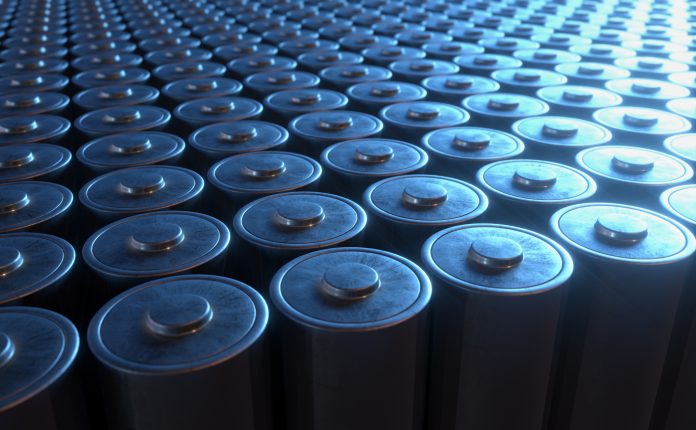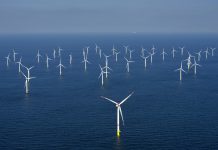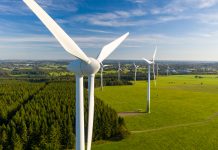Alex Hunter, CEO of Sherwood Power, argues that we will only see a competitive and sustainable battery industry for Europe if we embrace new battery technologies and energy storage solutions
Given the current geopolitical climate, energy security concerns and the urgent need to address carbon emissions, it has arguably never been more critical that Europe develops a robust domestic battery value chain. Efficient batteries are crucial for deploying electric vehicles, energy storage systems, power grid flexibility and industrial applications. Yet, Europe currently imports around 80% of its batteries from Asia. While the European Commission has set ambitious goals to establish a battery value chain as part of its efforts to reduce dependence on imports and increase the deployment of clean energy technologies, there are still significant challenges it faces in achieving its aim of becoming the world’s ‘first climate-neutral continent’.
Metals & minerals in the energy transition
According to the International Energy Agency (IEA), many clean energy technologies rely on metals and minerals in tight supply. In its 2019 report Tracking Clean Energy Progress, the IEA outlined that the energy transition will require significantly more metals and minerals such as lithium, cobalt, nickel, and rare earth elements. This is supported by World Bank estimates, which say mineral production will need to increase by nearly 500% by 2050 to achieve climate goals, while EU officials estimate that Europe will require almost 60 times more lithium than it currently uses.
Competition for these metals and minerals is already fierce, and more mature markets often enjoy greater buying power and can drive prices up. For example, lithium (required for lithium batteries) is used in significant quantities in the pharmaceutical industry. At the same time, vanadium (used in vanadium redox flow batteries) is also used in stainless steel production. Furthermore, most of these raw materials are currently sourced from outside of Europe, and there are both limited supplies and a lack of existing infrastructure within Europe to enable mining to take place. Reducing Europe’s reliance on imports will require either a significant investment in mining and refining capacity, a wider spread of homegrown technologies employed to meet market demand, or both.
Concerns have also been raised about the environmental impact and ethical implications of both mining and disposing of these materials. Environmentalists argue that the extraction of minerals such as lithium disrupts natural landscapes, can lead to air and water pollution and relies on water – another increasingly scarce resource. There have also been concerns about human rights violations at lithium mining operations in developing countries. Some reports suggest that child labour and other forms of exploitation can occur.
However, the World Bank estimates that the carbon footprint of producing the minerals required for battery production will account for only 6% of the greenhouse gas emissions generated by fossil fuel technologies. Meanwhile, the European Commission’s Battery Directive has already set out the rules for battery production and disposal to protect the environment and human health.
Competitive & sustainable battery industry
So, how can Europe develop a competitive and sustainable battery industry? Firstly, it must embrace a diverse range of energy storage solutions rather than becoming overly dependent on a single type of battery. While lithium batteries are central to electric vehicles, other energy storage technologies (such as compressed air energy storage or flow batteries) have characteristics advantageous to other applications, such as grid-scale energy storage. Embracing a multifaceted approach would create a more robust European industry. It would also prevent an over-reliance on a handful of gigafactories, prominent market leaders manufacturing a single solution. The risks of a consolidated value chain are currently being seen in the UK following the collapse of Britishvolt. Furthermore, manufacturers must be financially accountable for the environmental cost of the waste they produce.
Secondly, Europe must balance both supply and demand by increasing consumption and the production of batteries and energy storage technologies. Doing so will help create a stable and sustainable market for new technologies, attracting further investment and stimulating economic growth. The European Commission has already introduced a range of measures to support its ambitions to make Europe a global leader in sustainable battery production, such as the European Battery Alliance (EBA)’s Strategic Action Plan for Batteries. Meanwhile, the EU is investing in research and innovation to support the development of new technologies and manufacturing processes and improve the performance and safety of batteries.
Stimulate demand for energy storage solutions
However, the European Commission must also consider initiatives that stimulate demand for batteries and other energy storage solutions within the European marketplace. We are already seeing this happen in some verticals; for example, the European Commission supports the deployment of electric vehicles (a critical application for batteries) through various initiatives such as the Clean Mobility Package and the European Green Deal. Expanding this investment and support to other applications – such as the development of microgrids and alternative energy storage technologies – would help achieve the European Commission’s ambitions to build a globally competitive industry and achieve its net-zero targets.
The European battery industry can significantly contribute to the clean energy transition and the region’s economic growth. However, there are still challenges, such as scaling up production and ensuring that disposal/reuse is environmentally friendly. There is already a mature European supply chain for alternative electrical energy storage technologies (other than lithium battery technology). This provides a significant opportunity if developed further. A balanced approach that considers the advantages and limitations of different energy storage technologies and commits to embracing hybrid solutions will foster the development of a much more resilient and competitive European energy storage industry.
References
- Amnesty International. (2020). “Lithium mining: human rights abuses in Chile’s Salar de Atacama”. [Online] Retrieved from: https://www.amnesty.org/en/what-we-do/climate-change/energy-transition/
- European Commission. (2019). “Battery Alliance Progress Report 2019”. [Online] Retrieved from: https://single-market- economy.ec.europa.eu/industry/strategy/industrial-alliances/european-batt ery-alliance_en
- European Commission. (2021). “Clean Energy for All Europeans Package”. [Online] Retrieved from: https://energy.ec.europa.eu/topics/energy- strategy/clean-energy-all-europeans-package_en
- European Commission. (2017). “Clean Mobility Package”. [Online] Retrieved from: https://ec.europa.eu/transport/themes/sustainable/clean-mobility- package_en
- European Commission. (2017). “European Battery Alliance”. [Online] Retrieved from: https://ec.europa.eu/commission/presscorner/detail/en/QANDA_22_1257
- European Commission. (2019). “European Green Deal”. [Online] Retrieved from: https://ec.europa.eu/info/strategy/priorities-2019-2024/european- green-deal_en
- Human Rights Watch. (2019). “Lithium Mining in Chile: The Environmental and Human Rights Impact”. [Online] Retrieved from: https://www.reutersevents.com/sustainability/indigenous-peoples- livelihoods-risk-scramble-lithium-new-white-gold
- International Energy Agency (2019) Tracking Clean Energy Progress. [Online] Retrieved from: https://www.iea.org/reports/tracking-clean-energy-progress- 2019
- International Energy Agency (2021) Energy Access Outlook 2021. [Online] Retrieved from: https://www.iea.org/reports/energy-access-outlook-2021
- McKinsey & Company. (n.d.). Capturing the battery value chain opportunity. [online]: https://www.mckinsey.com/industries/electric-power-and-natural- gas/our-insights/capturing-the-battery-value-chain-opportunity
- World Bank (2019) Minerals for Climate Action: The Mineral Intensity of the Clean Energy Transition. [Online] Retrieved from: https://www.worldbank.org/en/topic/climatechange/brief/minerals-for- climate-action-the-mineral-intensity-of-the-clean-energy-transition











